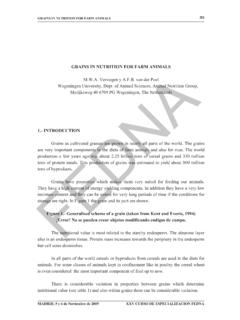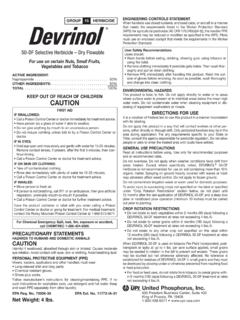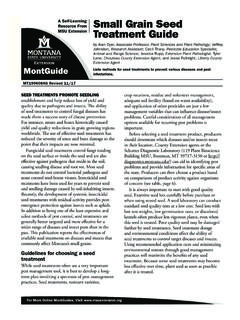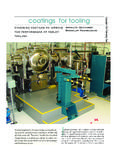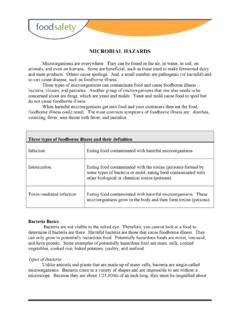Transcription of Australian Fertilizer Industry Value and Issues …
1 The Australian Fertilizer Industry -- values and Issues Australian Fertilizer Industry Conference 2010. Fertilizer Industry Federation of Australia Terry Ryan Meta Economics Consulting Group 1 2 Contents Abbreviations .. 5. Executive summary .. 7. Chapter 1: Fertilizer Industry Contribution to the Australian Economy .. 9. Chapter 2: The Fertilizer Industry in Australian History .. 13. Chapter 3: The Fertilizer Industry in Australia .. 16. Chapter 4: The contribution of Fertilizer to agricultural productivity .. 34. Chapter 5: Productivity improvements in agriculture .. 42. Chapter 6: The Australian Fertilizer Industry in a world context .. 50. Chapter 7: Feeding the world in 56. Chapter 8: The International Food Price Spike of 2008 .. 64. Chapter 9: Carbon Pollution Reduction Scheme .. 70. References .. 82. Appendix : Australian and International Production, Consumption, Exports and Imports of the Major Fertilizer Products -- 86.
2 3 4 Abbreviations ABS Australian Bureau of Statistics ABARE Australian Bureau of Agricultural and Resource Economics ACCC Australian Competition and Consumer Commission CAN Calcium Ammonium Nitrate CPRS Carbon Pollution Reduction Scheme CSIRO Commonwealth Scientific and Industrial Research Organisation DAP Diammonium Phosphate DSE Dry Sheep Equivalent FAO Food and Agriculture Organisation FIFA Fertilizer Industry Federation of Australia GRDC Grains Research and Development Corporation IFA International Fertilizer Association IMF International Monetary Fund LNG Liquefied Natural Gas MAP Monammoniumphosphate MOP Muriate of Potash NPK Nitrogen, Phosphorus and Potassium fertilizers TSP Triple Superphosphate UAN Urea Ammonium Nitrate 5 6 Executive summary The Value of the Fertilizer Industry to the Australian economy is much greater than its Value of output or Value -added to the broad economic aggregates.
3 Its downstream contribution to the total economy is magnified by its impact on the productivity and production potential of Australia's agricultural sector. If there was no chemical Fertilizer available for the agricultural sector then: the agricultural sector would bear a direct economic cost from reduced production of $ billion;. the entire economy would be reduced by $40 billion from flow on effects;. the employment loss in the agricultural sector alone would have totalled 107,000. workers;. for the economy, it would have been 300,000 jobs; and exports from the agricultural sector would have decreased by $9 billion. The Fertilizer Industry in Australia has been growing in its own right, and as an increasing input into Australian agriculture, with fluctuations in demand because of seasonal conditions. It is no longer entirely dependent upon imports of products or raw materials and has become an exporter of products in the Australian off-season.
4 On a world scale, the Australian Industry is generally small in nearly all Fertilizer products and has no influence on world prices. There are major challenges for the Industry and the agricultural sector in the future. The Fertilizer Industry in Australia has been a major contributor to our enhanced agricultural productivity for over a century now. An analysis of field trials shows that without Fertilizer agricultural production in Australia would decline by approximately 20 percent for the broad acre cropping industries and by two thirds for the grazing industries. There are signs that productivity improvements in agriculture are on the decline, not just in Australia, but internationally. If this trend continues the importance of getting more out of the existing technologies that we have will rise. A world with a bigger, richer population will require a lot more agricultural production.
5 The role of fertilizers as a crucial technology for increasing agricultural production will rise in importance. A carbon constrained world will also pose new challenges, not just for the Fertilizer Industry but also for the agricultural sector generally. If the Carbon Pollution Reduction Scheme was in place, the Australian Fertilizer manufacturing Industry would face an additional cost impost equivalent to an increased payroll tax of six percentage points. 7 8 Chapter 1: Fertilizer Industry Contribution to the Australian Economy The Australian Fertilizer Industry has been an unsung hero of the Australian economy. It has been a crucial component in our history for delivering the agricultural production and productivity growth that has helped develop Australia. Its Value is much greater to the economy than the Value of its sales alone. Its downstream contribution to the total economy is magnified by its impact on the productivity and production potential of Australia's agricultural sector.
6 Its current Value to the Australian economy is measured in our national statistical accounts, but a truer measure is what would be the impact on the economy if there was no chemical Fertilizer Industry to supply our agricultural sector. Important as the Industry is now, it will be even more essential for meeting the challenges of the future, not just for Australia, but for the world, in feeding the richer, larger population we will have in 2050 but also in helping combat problems arising from climate change and the continuing likely expansion of biofuels production. From the various studies provided in this paper a scenario can be developed to show what happens to the agricultural sector, and the economy generally, if there is no Fertilizer usage in Australian agriculture. A detailed analysis of the impact on agricultural production of Fertilizer is provided in Chapter 4.
7 The analysis presented here is the summary effects from a review of a series of field trials. The impacts are measured primarily on the broadacre industries, as the smaller horticultural industries are highly variable in their response to Fertilizer and tend to be located on much better soils. Also the intensive livestock industries will not be directly impacted as they do not use Fertilizer . There can be indirect impacts from less feed availability from the broadacre cropping industries but these have not been estimated. 9 The livestock numbers and values of production have been adjusted to take account of the production from the rangelands of Australia where Fertilizer is not generally used. This is a broad approach to provide indicative estimates as there will be areas outside the rangelands that also do not use Fertilizer , as well as some areas within them that will have fertilised paddocks.
8 Approximately 12 percent of sheep numbers and 28 percent of cattle numbers are located in the areas defined as rangelands. The values from livestock products serve as the base for assessing the impact of fertilizers and have therefore been adjusted by these percentages. There is, as noted a lesser effect on the grains, oilseeds and sugar industries from ceasing the use of Fertilizer than on the improved pasture lands, which have been generally shown to be highly dependent upon superphosphate use for improved pastures, compared to the native pastures. As shown in Table , the direct reduction in the Value of production would have been over $15 billion in 2008 -- 09. The actual loss of Value added is adjusted to remove the cost of fertilizers which are no longer being used. This was a year when international Fertilizer prices were much higher than the average of previous years and the current year.
9 Therefore it is likely that this is an understatement of the true cost to the economy. In 2008 -- 09 the Value of Fertilizer use by farmers was estimated at $ billion by ABARE. This direct economic cost to the Australian economy from the agricultural sector alone amounts to approximately $ billion. Table Economy wide losses from the non use of fertilizers ($m). Value of production (with fertilizers ) $45,126. Reduction in Value of production (without fertilizers ) $15,467. Agricultural sector net income reduction $12,693. Economy-wide income reduction $27,645. Total reduction in income $40,338. Apart from the direct impact on agriculture there are also economy wide impacts. The income multiplier from the Australian input output tables for agriculture is (NSW I and I). Using this multiplier on the reduction in Value added from the agricultural sector leads to further gross income foregone in the wider economy of over $27 billion in 2008 -- 09.
10 The reduction in income for the entire economy from an inability to use fertilizers would therefore have totalled over $40 billion in 2008-09. 10 Assuming a constant ratio of labour to the Value of output, then the reduction in the Value of output caused by the lack of use of Fertilizer will have a proportional impact upon employment in the sector. In 2008-09, there were over 357,000 people employed directly in the agricultural sector and an additional 24,000 people employed in services to agriculture. The proportional reduction in employment from not having Fertilizer available would lead to an employment loss in the sector alone of 107,000 people. The flow on effects can be calculated again from the employment multiplier derived from the Australian input output tables. That multiplier is which would indicate a further loss of jobs in the economy of 196,000.
